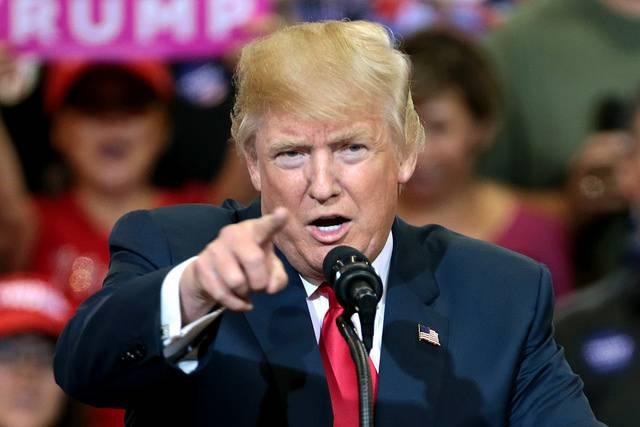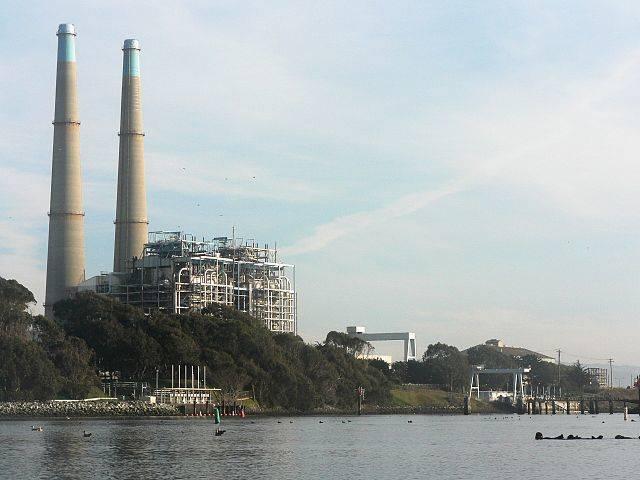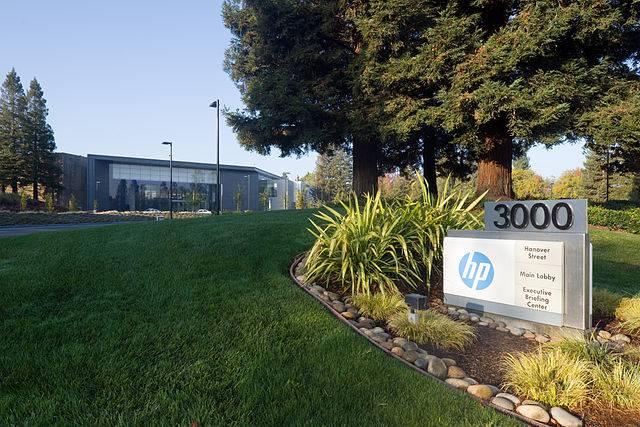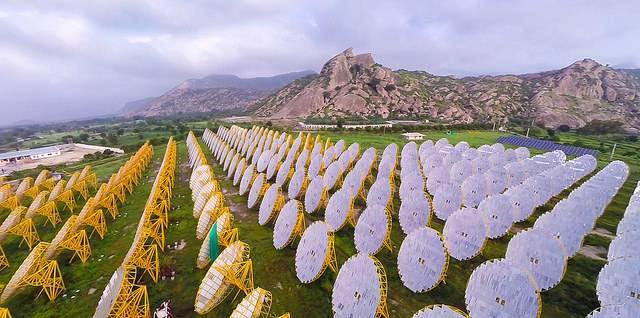Unpacking the Real Cost of Donald Trump's Border Tax


U.S. President Donald Trump and House Speaker Paul Ryan (R, Wis.) are proposing a 20 percent border tax. Their goal is to level the playing field between American manufactured goods and foreign goods. And the promise is that a border tax will return manufacturing jobs to America.
But here is what you must also know. A border tax is a consumer tax. Buying back-to-school clothes will be a more painful experience. Avocados, shrimp and bananas will cost a lot more. Get ready for sticker shock at Starbuck's and your auto dealership.
Beyond higher prices, some wonder whether the border tax plan will be leveraged to lower corporate America's taxes or whether it will actually create manufacturing jobs.
Trying to solve a 1980s problem with your pocketbook
In the early 1980s, a tax on imported goods would have protected American manufacturing jobs. But today that cat is out of the bag. We live in a global supply chain. Today’s intense competition within the global supply chain is keeping prices from rising. It is why we have not seen higher prices for what we buy from multinational companies like Apple, Ford or Walmart. The global supply chain is saving you money.American manufacturing has learned how to compete within the global supply chain. Our factories are producing twice as much as they produced in 1984. America’s smart factories win competitive advantage because sweat shops cannot compete against their ability to ship price-competitive, mass-customized products into a just-in-time global inventory system. That is partially why we are now seeing on-shoring of manufacturing back into the U.S.
A border tax funds a corporate tax cut
The stated logic for a border tax is that it can be used to cut corporate taxes, and this will create new manufacturing jobs.But here is what corporate America has actually been doing with their after-tax cash flows:
- Buying back stock to support higher stock prices
- Paying dividends to support higher stock prices
- Investing in smart technologies that use fewer resources, including workers
With this in mind, it's easy to imagine a scenario in which a border tax actually reduced sales and employment:
- Consumers may very well cut their purchases from sticker shock created by a 20 percent border tax
- And businesses will then cut employment due to sales decline.
How the rich will get richer from a border tax
Income and wealth inequality is a drag on our economy. Seventy-six percent of America’s wealth is held by just 10 percent of the wealthiest Americans. Ninety percent of us have limited spendable income. Since consumer spending accounts for 75 percent of our economy, this restricts business sales growth.This problem will only be made worse if a border tax takes money out of the pockets of the 90 percent. And worse still if corporate America uses the tax cuts generated by a border tax to buy back stock and raise dividends -- money that, again, goes mostly into the pockets of the 10 percent.
Could the border tax lower individual tax rates?
The border tax could be used to lower individual taxes. That could mitigate the pain of higher consumer prices. In economics this is called an income effect. If incomes go up as much as prices go up, there is an income effect where the higher prices do not create a net reduction in satisfaction.Now, ask yourself: When was the last time the government got this right? Remember President Ronald Reagan’s supply-side economics? Taxes were massively cut on the assumption that they would generate sustained job growth. It did create a short-term economic boom. It also started us down the path of massive annual government deficits. Then the tax-generated economic boom went bust, and stock prices collapsed in 1987.
The last American border tax accelerated the Great Depression
America has been here before. In 1930 the U.S. adopted a border tax through the Smoot-Hawley Tariff Act. The American Economic Association issued a letter opposed to this border tax that was signed by 1,028 economists. Their arguments reflect this article’s analysis. Smoot-Hawley sought to protect farmers but failed to do so because they were part of a global market. The tariff dramatically raised consumer prices and cut business sales. Businesses responded by cutting jobs.The Republican Congress and president ignored the economists (sound familiar?). This tax turned a recession into the Great Depression. National incomes dropped 36 percent. The Great Depression then drove global extremism, culminating in Adolf Hitler's rise to power and the second world war.
Free markets are America’s competitive advantage
America’s economy would greatly benefit from tax reform that reduces the amount of time and resources spent on calculating and paying taxes. Our economy would benefit from removing special interest tax breaks that benefit the few at the expense of the many.But tax reform should not be confused with creating the foundation for sustainable economic growth. Economic growth is won through productivity and innovation. Protectionism in any form, including a border tax, undercuts the ability of our free market system to reward those who are more productive and innovative.
A border tax sounds great because there is real human pain tied to lost manufacturing jobs. But protectionism does not grow jobs, and it will not reduce this pain. Protectionism is proven to create economic recession and depression, job loss, and even war.
America must go lightly into this night.
Image credit: Flickr/Gage Skidmore
Boycott or Not, Under Armour Stung By Trump's Toxic Touch


Noticing the rash of boycotts called into action over the past year, TriplePundit is taking a closer look at whether they actually work.
The recent case of the popular athletic brand Under Armour offers some interesting insights. The company has been in the media spotlight since last weekend, when CEO Kevin Plank praised President Donald Trump in a televised interview.
His endorsement sparked a boycott along with a storm of pushback from Under Armour's celebrity endorsers, including the popular actor Dwayne “The Rock” Johnson.
And revolt from spokespeople is a significant development. Conflicts between companies and celebrities on their payroll usually stem from misdeeds by the celebrity, not the company. In addition, the proactive stance Under Armour's endorsers took also muddies the waters when it comes to measuring the impact of a consumer boycott against other factors influencing corporate behavior.
Did the boycott work?
To be clear, without consumer research in hand it's difficult to tell whether the Trump connection turned a significant number of consumers away the Under Armour brand, if any at all.
For example, last November disappointing sales of Under Armour's much-publicized Stephen Curry shoe lead to a $600 million decline in the company's value. (Sales of the shoe started out strong, but did not perform as well as expected.) That was long before Plank issued his comments. Industry observers at the time posited that consumers turned away simply because the shoe had an unfashionable high-cut profile.
The company also took another hit in the stock market at the end of January, shortly after Trump issued the oft-called "Muslim ban."
The travel restrictions were issued just one week after Plank met with President-elect Trump on behalf of Under Armour, along with 11 other leading U.S. manufacturers. The meeting was part of Trump's much-publicized manufacturing initiative. However, it's highly unlikely that a large number of Under Armour customers were paying attention to the meeting.
News about Plank's comments didn't break until Feb. 8. During the course of an interview that touched on the manufacturing initiative, Plank made this observation:
“He’s highly passionate. To have such a pro-business president is something that’s a real asset to this country,” Plank said of Trump.
That remark set the Internet aflame and touched off calls for a boycott almost immediately.
Shortly after, the company's stock fell into junk status.
. . . That depends on who's doing the boycotting
It's still not clear that the boycott itself had a causal relationship to the company's latest misfortune.
However, you could make a strong case that the threat of a boycott was the straw that broke the camel's back when it comes to its valuation.
Keep in mind that research shows boycotts are rarely successful. But when they are, it's because the target is a company that is already vulnerable. And a declining reputation is one of those vulnerabilities.
The converse is reputational strength -- which is probably why, for example, Starbucks has sailed through at least seven boycotts that trended on Twitter over the past five years.
In the case of Under Armour, it's probably too early to measure the reputational impact of the Trump connection on consumers' brand choices. The main point is that consumer preference is now a moot point, because investors have already fled the company due to the mere threat of reputational decline.
New York Magazine offers a good explainer in that regard (do read the whole piece for more detail about the influence of "young urbanites"):
"While they have disproportionately weak influence over the policies of their government, they enjoy disproportionately strong influence over the messaging of their brands. This is because city-dwelling millennials are more likely to try new products than your average elderly person in rural America — and the former’s brand loyalty is more coveted, since they are less likely to die soon."[snip]
"In the weeks since Trump’s inauguration, the president’s toxicity with urban millennials (a.k.a. cool America) has proven more salient to marketing departments than the threat of his Twitter tantrums."
[snip]
"This week, an analyst with Susquehanna International Group cut his target stock price for Under Armour from $24 down to $14, explaining that when Plank described Trump as a “great asset for America,” he made it “nearly impossible to effectively build a cool urban lifestyle brand in the foreseeable future.”
The analyst cited by New York Magazine was Susquehanna's Sam Poser. Market Watch offers this additional insight from Poser:
"He said the main reasons behind the downgrade are the 'reputational risk' created by the recent 'sloppy' political commentary made by Chief Executive Kevin Plank, 'too basic' apparel lines and the difficulties of building a lifestyle brand."
In terms of reputational decline, it's also worth noting that hunters have been boycotting Under Armour since last summer, complete with a Facebook page to that effect. That boycott began when Under Amour dropped its sponsored hunter over a controversial bear kill (the kill was actually made by her husband).
In addition, investors were already souring on the company, and not just because of the Stephen Curry shoe.
Some analysts attribute the company's overall poor performance last year to a general weakness in the consumer market that transcends politics.
Conventional retail stores in particular had a rough time in 2016:
"Many big retailers -- most notably Macy's (M) and Kohl's (KSS) -- reported weak results for the holidays, leading investors to wonder whether the American consumer is in trouble or if traditional retailers are just losing more ground to Amazon,' Paul R. La Monica wrote in CNN Money."Under Armour has been hit particularly hard by the problems facing brick-and-mortar retailers, especially those specializing in athletic wear. The Sports Authority went out of business. Finish Line (FINL) closed hundreds of stores last year."
By the end of January, investors finally decided that the company's "growth story" peaked out. Here's a representative comment:
“We suspect this reflects weakening demand in its domestic wholesale channel, slower demand for footwear and apparel and international challenges,” financial services firm Raymond James told Marketwatch.
When celebrity endorsers #resist
If you go by the New York Post (well, consider the source), Under Armour was flying high in the first half of 2016. In a glowing article last July, the Post attributed part of the company's success to its celebrity endorsers:
“It’s a well-curated group of aspirational athletes and models," retail strategist Melissa Gonzalez told The Post. "It sells the story of inspiration."Other rivals pale in comparison. Reebok never reached this point because it couldn’t figure out how to connect with customers — and Adidas didn’t excel because it offered so many contrasting trends, brand-building expert Denise Lee Yohn noted.
"Under Armour has successfully built a strong brand by engaging certain market segments really well," Yohn told The Post.
As they say, the rest is history. If the average consumer was not paying attention to Plank's meetings and comments, celebrity social media probably caught their attention.
Several of the company's endorsers pushed back strongly in response to Plank's praise of Trump. Perhaps the most eloquent statement came from Dwayne "The Rock" Johnson, who posted on Instagram:
"I partner with brands I trust and with people who share my same values. That means a commitment to diversity, inclusion, community, open-mindedness and some serious hard work ... Great leaders inspire and galvanize the masses during turbulent times, they don't cause people to divide and disband. My responsibility here is not only to the global audience we serve, but also to the thousands of workers who pour blood, sweat, and tears into making Under Armour strong."
Do read the full piece to get the full impact. Johnson in effect declared that Plank's comments forced a choice:
"I feel an obligation to stand with this diverse team, the American and global workers, who are the beating heart and soul of Under Armour and the reason I chose to partner with them."
When news of Plank's comments broke, Under Armour responded swiftly:
"We have teammates from different religions, races, nationalities, genders and sexual orientations; different ages, life experiences and opinions. This is the core of our company. At Under Armour, our diversity is our strength, and we will continue to advocate for policies that Protect Our House, our business, our team, and our community."
Faced with a continuing firestorm of criticism, Plank himself walked back his support for Trump in a full-page ad in the Baltimore Sun.
Baltimore plays a significant role here because it is the company's home town, and in the letter Plank emphasized "hometown values" more consistent with those of a diverse city.
In the letter, Plank made it clear that Under Armour is actively opposed to Trump's travel ban on majority-Muslim countries and is taking positions on other items in the Trump legislative agenda.
Whether or not individual consumers made a difference by actively engaging in a boycott, the investor community decided the Trump connection damaged the Under Armour "cool factor."
It is virtually certain that other brands are watching this story closely.
If they're not, they should be.
Image credit: Flickr/jun560, creative commons license
California Can’t Stop Building Unneeded Fossil Fuels Plants


A recent story in the Los Angeles Times lays bare the absurdity of California’s energy landscape and the overwhelming power of for-profit utilities.
The Golden State is undergoing a clean-energy boom, with solar installations skyrocketing. Yet, at the same time, it's building several new mostly gas-fired power plants. Combined with increasing energy efficiency, you have the recipe for a massive glut -- one that is costing the state billions.
This begs the obvious question: If California has too much energy, and already mandated state clean-energy goals, why is it building more fossil fuel power plants?
Part of the problem is that much of the state’s power generation is still under the control of investor-owned utilities, in particular, the California big three: Southern California Edison, San Diego Gas & Electric, and Pacific Gas & Electric.
These companies all opposed the California Public Utilities Commission's decision to maintain net-metering early last year, despite near universal support from solar companies, environmentalists and clean-energy experts. The reason? Net metering reduces these utilities' power over the energy system and their bottom line.
So while PG&E markets itself as a solar leader, it pushed forward on plans to build the Colusa Natural Gas Plant under a guaranteed profit agreement, the LA Times reported. The plant is now generating far below its capacity, meaning that ratepayers are filling in this gap. Yet, due to regulations, PG&E still profits from the plant.
Investor-owned #utilities make more money building new plants than by buying #electricity from independent producers https://t.co/1f2fO4iigb
— CounterCorp (@CounterCorp) February 6, 2017
Guess where the profits are coming from? You guessed it – us. It is ratepayers who bear the brunt of this unneeded power plant boom. Electricity rates have gone up, despite the growth in cheaper solar power and increased energy-efficiency measures. Californians pay 12 percent more for electricity than they did in 2008, a stark contrast to the rest of the U.S., where energy rates remain steady.
Investigation by @latimes reveals Californians pay 50% more than other states to maintain power plants we don't need https://t.co/vD9bBLKEsx
— Brad Streicher (@bradrstreicher) February 6, 2017
If there is hope in the future, it lies not in the investor-owned utilities or the Public Utility Commission, but in the growing number of activists across the state fighting the expansion of fossil fuel plants, like the California Environmental Justice Alliance.
Why is @CalEnergy moving forward with another power plant in Oxnard when we have a surplus of power in CA? https://t.co/qcWNVBKzln @LATimes
— CEJA (@cejapower) February 7, 2017
It was, after all, grassroots activists led by the Sierra Club’s Beyond Coal Campaign that resulted in the closure of dozens of dirty coal-fired power plants across the country. We need to expand that movement to cover all fossil fuels, particularly in California where gas, not coal, is the dirtiest emitter. Let’s put the environment ahead of the investor-owned utility profits.
If we have too much electricity in California, we should close the dirtiest power plants https://t.co/LSPqSpYILP
— Chris McKee (@Ragcha) February 6, 2017
In Germany, it was only after consumers took over private utilities and made them public entities that they were able to shift to renewables. California may need to consider doing the same – and one avenue might be Community Choice Energy, in which cities regain control over energy choices. It’s time.
Image credit: David Monniaux via Wikimedia Commons
HP Pledges to Slash Emissions 25 Percent by 2025


HP, Inc. is only one half of the former Hewlett-Packard Co., but it's still a global leader in the manufacture of personal computers and printers. And now the company will adopt what it describes as a significant plan to reduce greenhouse gas emissions by 25 percent from 2015 levels by 2025.
The Palo-Alto based electronics company says its three-pronged approach to reducing its carbon footprint includes energy efficiency, onsite clean-energy installations, and the purchase or generation of offsite renewables.
Although the $57 billion company does not use the term outright, its approach toward sustainability and energy efficiency can be described as holistic.
HP’s most recent sustainability report claims it is inching closer to a circular economy, which includes the offering of more products as a service, product reuse and refurbishment programs, and an improvement in materials recovery and reuse. And HP says those efforts resulted in an 11 percent decrease in its carbon footprint as well as a 12 percent decrease in water consumption during 2015. (When compared to the legacy Hewlett-Packard's 2014 metrics, the new HP Inc. estimates that it is three-quarters the size of the original company before it was split in two.)
HP’s announcement comes shortly after it reached its supply chain and operational greenhouse gas emissions reduction targets five years earlier than originally planned. Across its supply chain, HP said it cut the emissions impact of minerals extraction through manufacturing by over 16 million metric tons. On the operations side, the company says it eliminated 900,000 metric tons of emissions just by encouraging employees to work from home, to participate in carpooling or to use alternate forms of transportation.
Additionally, HP plans to forge a deforestation-free supply chain by 2020 while it closely works with environmental NGOs such as WWF. As far as the alignment with sustainability standards, the company is working with the Forest Stewardship Council on paper products while scoring a perfect 100 from CDP on climate disclosures.
Trying to designate the world’s most sustainable technology firm is a risky venture, as companies such as Microsoft, Google and Apple can all insist they have vastly improved their environmental performance in recent years. Nevertheless, Hewlett-Packard, and now HP Inc., have claimed a bevy of firsts. The Silicon Valley giant says it is the first company within the tech sector to publish its complete water and carbon footprints as well as having taken the earliest steps to establish greenhouse gas emissions reduction targets across its entire value chain.
And when it comes to human rights and the social side of sustainability, HP Inc. has also set the bar fairly high. It has welcomed the LGBT community for years, having earned a 100 percent score from the Human Rights Campaign for 13 consecutive years. The company also says it was the first among its peers to establish a supplier code of conduct in order to improve the treatment of student and foreign migrant workers across its supply chain.
Image credit: LPS.1/Wiki Commons
CSR 2.0: Breaking Down Community-Corporate Barriers


By Marc Stefanski
Roughly a third of America’s philanthropic donations were made in December, and many Americans bring that generosity to corporate giving decisions, too. Last year alone, the corporate sector contributed an estimable $18.46 billion to nonprofit organizations. But while each corporate contribution is meaningful by itself, its impact can be amplified exponentially with active, year-round engagement in the community.
Leaders across a host of industries, from financial services to technology, are finding ways to make corporate social responsibility (CSR) an integral part of the long-term business vision. In addition to the pure ethical value of “walking the walk,” becoming better corporate citizens can also result in meaningful business value.
By building the relationships between our associates (employees) and the communities we operate in and serve, organizations like retail banks or local services can earn greater consumer trust and loyalty. The benefits of creating a CSR culture can also ripple across the associate base, as team members take pride in participating in a local cause — in turn buoying recruitment and retention.
How can your company become a more engaged corporate citizen? The key is to get involved in the community in a regular, hands-on way. This means both going out into the community — and inviting people in.
5 ways to activate your CSR goals
Our company, Third Federal, has a long history of community involvement. It was founded during the Great Depression in 1938 in Cleveland’s Slavic Village neighborhood and is still headquartered there today. Through the years, we’ve found several ways organizations can break down barriers between their walls and the people in the communities right outside:
1. Leverage your influence for the greater good. People are listening to your organization. Don’t just market your products; use the channels to do some good. For example, we partnered with the local NBC affiliate here in Cleveland, WKYC TV, to launch the local #WeReadHere initiative to encourage children and their families across Northeastern Ohio to read together for at least 20 minutes every day. The multimedia campaign included social media, and is actively shared by area schools and nonprofit organizations.
2. Get creative about contributions. Matching associate donations (to United Way, in our case) is a great start; but there is a limit to how much can be given, so it’s useful to identify other ways associates can contribute.
For example, earlier this year, our associates collected more than 1,000 school supplies to give to underserved schools. We also organize an annual glove and hat drive to provide more than 200 children in our neighborhood K-8 schools with new hats and gloves.
Corporate volunteer opportunities are another important way for employees to get involved. Our associates participate in an after-school technology club — the Techie Club — for third-, fourth- and fifth-graders, a weekly tutoring program that helps students use computer technology to work on projects like programming, making movies, and creating robots.
3. Take care of your associates. Corporate social responsibility is not limited to the communities outside of the workplace. Your associates are one of your most valuable assets, so treat them like family. Create and maintain a corporate culture that embraces a healthy work-life balance so associates enjoy their time outside of work with family and friends. Support associates in times of need; and make sure they know they are valued and appreciated.
4. Invite the community inside. Corporations can become better neighbors in the community by hosting community events in their facilities during non-business hours. This can take the form of offering up space for business events for organizations like nonprofit community partners, which often need a conference room, or hosting more philanthropic special events. For example, we open our company cafeteria after business hours on Christmas Eve, in order to host a full holiday meal for more than 250 men, women and children in need.
5. Focus on where you can make a difference. While it’s true that no one company can eliminate poverty or cure cancer, you might be surprised by how far corporate goodwill can travel, and the impact that multiplies with it.
For example, we fund four Cleveland schools’ participation in the America SCORES program, which combines academics and sports/team-building (through soccer), while providing vital after-school care to children in the inner city. Supporting this program means we help students gain confidence, become more engaged in school and on the sports field, and access positive adult mentoring — all potentially life-changing differences for many children in our community.
--
The concept of corporate social responsibility is not new. For some companies, however, it has become a meaningful way of doing business rather than just a box to check at the end of the year.
Image credit: Pixabay
Marc A. Stefanski is Chairman of the Board, Chief Executive Officer and President of Third Federal Savings and Loan. Since becoming chairman and chief executive of the 78-year old thrift in 1987, Mr. Stefanski has overseen Third Federal’s continual growth as the dominant home mortgage lender in Ohio, as well as its growth in the Florida market. Third Federal currently does business in 21 states, the District of Columbia, and reaches approximately 65% of the U.S. population.
Third Federal has assets of $13.2 billion as of December 31, 2016, up from $1.8 billion when Mr. Stefanski succeeded his father as chairman.
Mr. Stefanski earned an undergraduate degree (Bachelor of Arts in Economics) from Heidelberg College in 1976 and an MBA with a concentration in Systems Management from Baldwin Wallace College in 1980.
India Is Set for Solar Success in 2017


By Brooke Nally
2017 looks like it might be the best year ever for solar adoption. Initiatives are set to pick up speed around the world, including in China. Of all the nations with big plans, though, India just might have the biggest.
India expects to commission 7.7 gigawatts of utility-scale solar projects this year, a 90 percent increase from 2016. These will join 1.1 GW of rooftop solar capacity — a 75 percent increase over 2016 — for a total of nearly 9 GW of capacity added this year alone. This will put the country’s total installed solar capacity at 18 GW and help it break into the top three countries in the world for installed solar capacity.
India’s long-term goals are ambitious: The country wants to get at least 175 GW of power from clean sources by 2022, 100 GW of which will be solar. That’s enough to power 60 million homes. And by 2030, India wants to have 40 percent of all power coming from non–fossil fuels.
Why India?
With a population approaching 1.3 billion, the country needs to find a way to supply its people with affordable and sustainable energy. Solar fits the bill. Panels are cheaper than ever — 30 percent less than retail energy in many places — and that trend is expected to continue.
Storage is also becoming more affordable: Costs of lithium-ion batteries, the industry standard, are expected to fall by as much as 30 percent per year over the next few years.
These dropping costs, combined with the increasing awareness that traditional fuel sources are not sustainable long term, make solar electricity systems one of the most attractive options for both residential and large-scale deployment. Inderpreet Wadhwa, CEO of Azure Power, told the Huffington Post he believes solar will be the cheapest form of energy in India within a few years.
India already has a large solar infrastructure and boasts the world’s largest solar power plant. The sprawling facility in Kamuthi, Tamil Nadu, covers an area of roughly 3.9 square miles. With a capacity of nearly 650 megawatts, it sits well above the previous record holder — California’s 550 MW Topaz Solar Farm. To put that output in perspective, it’s enough to power roughly 150,000 homes.
That's not India’s only forward-thinking initiative
The impact this effort will have on India can’t be overstated. Hitting that 100 GW target is expected to create over a million jobs in the country. That’s an investment in and of itself, though. To get all these workers up to speed, the country is taking a novel approach — affordable and accessible online courses.
For less than US$9, anyone can enroll in these solar energy courses. They cover a wide range of solar-related topics, including photovoltaic system basics, designing solar electricity systems, commissioning solar power plants, and operating and maintaining a plant. Those who successfully complete the program will receive a certificate from India’s Ministry of New and Renewable Energy, which can then aid them in getting a job in the industry.
India also wants to expand Internet access for its population. Of the 1.3 billion people living there, only 19 percent have Internet access.
To remedy this, the government partnered with Google to set up free public Wi-Fi access at train stations around the country. The plan will include as many as 400 stations across India over the next few years, helping millions of people get online.
This isn’t the snail-paced access you might expect, either. Google is using Indian company RailTel’s fiber-optic lines to provide the infrastructure, so speeds could reach 1 gigabit per second. To give you an idea of how advanced this gigabit Internet is, it’s the difference between waiting 10 minutes or waiting five seconds.
Because of its population, India is in a unique position to impact an enormous number of lives with these plans. And because of the scale required, it may help other, smaller nations feel more confident taking steps towards sustainable futures as well.
Image credit: Flickr/Brahma Kumaris
Based out of Salt Lake City, Utah, Brooke is the content coordinator for SolarPowerAuthority. She is a solar expert with a love for all things eco, including smart green design, hydroponic grow systems, green business initiatives, and sustainable living off the grid. You can contact her via Twitter; @brookenally.
5 Reasons to Start a Carpooling Mandate in Your Office


By Jenna Cyprus
Adopting social responsibility programs in your business can be intimidating. You want to do more for your community and improve your brand image, but you also don’t want to invest in the wrong approaches or spend so much money that your profits suffer drastically. Thankfully, there’s one policy that helps your business in multiple dimensions, and it comes with almost no downsides: carpooling.
The benefits of carpooling
Carpooling (or ridesharing) has existed since before the Great Depression. But it picked up steam in the 1970s when an oil crisis demanded that American citizens drastically cut back on their fuel consumption. Today, encouraging your employees to carpool is about more than just saving fuel; you and your workers can enjoy the following benefits:
1. Cutting emissions: One of the most important impacts of a carpooling program is a reduction in the carbon emissions your employees collectively produce. Transportation is responsible for about 31 percent of all man-made carbon dioxide emissions, which are cumulatively accelerating the severity of global climate change. In fact, every gallon of gas consumed by a vehicle results in 24 pounds of CO2 being released into the atmosphere.
Assume that your employees end up carpooling in groups of four, reducing 3 out of every 4 vehicles your company puts on the road on a daily basis. Hypothetically, if every business in the world did this, we would be able to collectively cut almost a quarter of all greenhouse gas emissions instantly. Alternatively, encouraging your employees to ride their bikes or take public transportation to work, or even work from home, could help mitigate the effects of your daily commuters.
2. Encouraging punctuality: Your carpools will also naturally encourage your workers to be more punctual. Ordinarily, each employee is responsible for his or her own travel to the office and may wake up late, neglect to account for traffic or bad weather conditions, or simply dawdle when coming into work. In a carpool, other employees are counting on their driver, and the employee in question has a higher, socially-bound sense of responsibility to stay on schedule. All of your employees will arrive more or less at the same time, resulting in a more efficient and consistent office culture.
3. Reducing travel time: Though not always the case, many major cities and highways feature a designated “carpool lane” or high-volume traffic lane, which allows carpooling vehicles to get around the usual traffic. Depending on the level of traffic on a given route, this could potentially cut travel time in half, making your employees happier and giving them more time to either work or relax.
Plus, imagine a scenario where every business instituted a carpooling policy; the number of cars on the road would diminish to a fourth of what they were before, and maybe even lower!
Collectively, this would result in less congested streets and faster travel times all around. Carpooling does, on occasion, take extra time so that all members of the group can be picked up, but the benefits on the road more than make up for this investment.
4. Employee bonding: Most commutes last about 30 minutes each way, or an hour a day round-trip, meaning your carpooling groups will spend an extra five hours a week together. That’s more than enough time for your employees to get to know each other on a personal level.
On the surface, that may not seem important, but it encourages bonding between employees and over time, can improve your team’s morale. Ultimately, that will result in higher levels of productivity and smoother collaboration for team projects.
5. Multitasking: Driving responsibilities will likely shift between members of your carpooling groups, but there’s only ever the need for one driver within a given group. The other members are free to do whatever they’d like — and in the era of smartphones and tablets, that means easily knocking out some work on the way to the office.
With carpooling in place, you’ll notice your employees coming to work warmed up and caught up on emails, and you may even be able to hold conference calls and meetings with your employees while they’re en route — without distracting your drivers unnecessarily.
Is a mandate necessary?
After looking at the title, you may find yourself wondering if a “mandate” is really necessary to get the benefits of carpooling within your office. The answer is, of course, no. Merely encouraging carpooling and establishing a culture that naturally produces its development is more than enough for the bulk of your workers to engage in the habit.
Offering rewards for carpooling employees, such as more flexible hours or even a cash bonus, may also help incentivize your crew. The point is to make carpooling a more regular feature between your employees — and both your brand image and bottom-line profitability will improve in response.
Image credit: Pexels
Jenna Cyprus is a freelancer writer in the Renton, WA area. Writing is her passion, especially when it allows her to research and learn about her interests. Follow her on Twitter and LinkedIn.
3p Weekend: 13 Sustainability Newsletters Worth Your Time


With a busy week behind you and the weekend within reach, there’s no shame in taking things a bit easy on Friday afternoon. With this in mind, every Friday TriplePundit will give you a fun, easy read on a topic you care about. So, take a break from those endless email threads, and spend five minutes catching up on the latest trends in sustainability and business.
The early days of the Donald Trump administration have been anything but boring. Many of us open our news apps with baited breath these days, as the incoming administration delivers policy after policy that sends the broader sustainability community into an uproar.
But amidst the cries that the sky is falling, the discerning reader can still find plenty to be optimistic about. Renewable energy continues to get cheaper and gain market share, and some analysts say Trump's antics could unintentionally push corporate social responsibility into the mainstream.
So how can you separate the news you want from the doom and gloom? Emailed newsletters are an ideal option, especially for readers on the run. Read on for our picks, and catch up on the stuff you really care about in 2017.
1. Sustainable Brands
Sustainable Brands is best known for its annual conferences that bring business leaders together to forge the next frontier of CSR. But the same company behind those week-long events in London, San Diego and now Detroit also publishes daily headlines related to sustainable business.
And if you don't have time to log on every day, you're in luck. SB offers six tailored newsletters to suit your reading needs. Choose from headlines on business, communications, research and more, or opt for the Weekly Digest for the need-to-know.
Sign up for Sustainable Brands newsletters here.
2. Guardian Sustainable Business
The Guardian, a leading U.K. newspaper, has a separate arm of its site dedicated exclusively to sustainable business. Find curated headlines and in-depth pieces befitting of the Guardian's respected journalists.
And if you don't have time to browse on the daily, the GSB Weekly newsletter is a solid alternative. Sign up for climate and policy updates, cleantech news, and op/eds from prominent thought leaders in the CSR space.
Sign up for the GSB weekly newsletter here.
3. B The Change Media
By now most of you have heard about B Corporations. Certified by the nonprofit B Lab, B Corps commit to a rigorous set of standards. Nearly 2,000 companies (including TriplePundit) are now B Corp certified.
B the Change media formed in 2015 as a partnership between B Lab and the media arm's CEO Bryan Welch. "We are not focused exclusively on B Corporations," B the Change notes on its website. "But we systematically use the comprehensive B Impact Assessment as a way of measuring companies’ commitment to doing good."
And the B Daily newsletter puts all of that good at your fingertips. You'll learn about up-and-coming companies using business as a force for good, and find out how legacy firms are reshaping their business for sustainability.
Sign up for the B Daily newsletter here.
4. GreenBiz
For seasoned CSR and sustainability pros, GreenBiz and its founder Joel Makower need little introduction. From daily headlines and research to global events and an expansive executive network, GreenBiz is one of the top sources for sustainable business.
The GreenBuzz newsletter brings you the latest breaking news, along with daily updates from Makower and special sections ranging from technology to carbon tools. Its Verge weekly newsletter focuses specifically on cleantech, with the latest news on energy, information, buildings and vehicles.
Sign up for the GreenBuzz and Verge newsletters here.
5. SmartBrief
Leading business-to-business (B2B) media company SmartBrief is all about keeping busy business leaders informed. SmartBrief publishes more than 200 tailored e-mail newsletters "in partnership with leading trade associations and professional societies," the company says.
That's a whole lot of curated knowledge on pretty much anything under the sun. But for our purposes, we suggest the SmartBrief on Sustainability and SmartBrief on Social Business. These daily newsletters bring all the latest headlines the sustainable business pro needs to know about before that afternoon water cooler chat.
Sign up for the SmartBrief on Sustainability here.
Sign up for the SmartBrief on Social Business here.
6. 3BL Media
Looking for the latest news directly from CSR leaders? Look no further than 3BL Media's Newsalerts.
Choose from weekly or daily newsletters, or opt for tailored news on health or energy topics. All newsletters contain press releases directly from companies about their latest CSR and sustainability initiatives. And you'll also get the low-down on upcoming events, webinars and conferences to keep yourself informed.
Sign up for 3BL Media newsletters here.
7. CSRWire
Under the umbrella of 3BL Media, CSRWire aggregates press releases related to CSR and sustainability -- bringing you all the latest in one place. And its Daily News Alert is more of the same: Browse press releases, events, reports, books and editorial commentary straight from your inbox.
Sign up for the CSRWire Daily News Alert here.
8. UNEP Climate Action Program
If you're looking to get your climate news 'straight from the horse's mouth,' as it were, this weekly newsletter from the U.N. Environmental Program is just the ticket.
Browse the latest news from the UNEP's Climate Action Program, read white papers and reports, and peep interviews with business leaders on the future of corporate climate action. And if you're looking for your next green job, the newsletter also includes the program's latest openings.
Sign up for the Climate Action Newsletter in the sidebar here.
9. NASA
For more insider climate news, this option from NASA is a must-read. It'll deliver the latest from NASA's Climate Change website to your inbox once a month, although with news that the Trump administration may try to gut NASA's climate division, who knows how long it will last.
Sign up for the NASA Global Climate Change newsletter here.
10. Cone Communications
The weekly Prove Your Purpose newsletter is ideal for folks who are short on time.
We're not sure how they do it, but Cone Communications manages to squeeze a whole lot into one weekly update. Check out the latest CSR trends the firm is tracking, and find curated headlines from all over the Web. You'll be the smartest person at the office all week.
Sign up for the Prove Your Purpose newsletter here.
11. Environmental and Energy Study Institute
EESI's weekly climate change newsletter focuses on the latest in climate research and policy. The nonprofit pulls from respected sources like Scientific American and the New York Times, and synthesizes the latest news into readable paragraphs perfect for the business leader on the go. Be prepared to spend at least 20 minutes on this one, but you'll walk away informed.
Sign up for the EESI Climate Change newsletter in the footer here.
12. FastCo.Exist
The sustainable business arm of Fast Company magazine, FastCo.Exist features the latest news on innovative business models, new economic policy and clean technology. And its fun, visually-stimulating take on information carries over into the FastCo.Exist daily newsletter. Additionally, you can find daily and weekly newsletters dedicated to leadership, philanthropy, technology, and more.
Sign up for the FastCo.Exist daily newsletter in the sidebar here. After signing up, open your preferences to select from other Fast Company newsletters.
13. TriplePundit
Okay, it would be a little weird if we didn't plug ourselves, right? But seriously you guys, have you seen the new 3p Weekly newsletter? We kicked off the new year with a new look and the same 3p content you love.
Each Weekly Dispatch newsletter brings you our most popular stories and curated coverage on the topics everyone is talking about. And our analysis with the triple bottom line in mind means it's more than just the headlines -- it's insight you can trust.
Sign up for the 3p Daily Headlines and Weekly Dispatch newsletters here.
Image credit: Pexels
Editor's Note: This post was updated on Feb. 20 with the most updated version of GSB's signup URL.
NGOs: Key Palm Oil Players Are Still Linked to Deforestation and Human Rights Abuse


We see less hydrogenated vegetable oils in our food products now, and that is a step forward for public health. The problem is that the resulting surge in palm oil -- the non-hydrogenated oil of choice for many food companies -- has festered plenty of headaches that together pose dangers for people and the planet’s health.
Organizations such as the Roundtable on Sustainable Palm Oil (RSPO) are fighting the good fight, as have allies in environmental NGOs such as WWF and Rainforest Action Network (RAN). These organizations have done a remarkable job in convincing large and small companies alike to source more responsibly- and sustainably-grown palm oil.
But plenty of companies remain either indifferent to the impact palm oil has on human rights and the environment, or they continue to back away from promises to reform their business practices.
One such firm is palm oil and paper supplier Korindo, a Korean-owned company with vast landholdings on the remote island of Papua. Papua is the easternmost region and last frontier of Indonesia; its largest city, Jayapura, is closer to Sydney than Indonesia’s capital, Jakarta.
Last year the NGO Mighty called Korindo out for what the organization’s researchers insisted was the destruction of virgin rainforests across the company’s land concessions. Korindo eventually acquiesced to environmental groups and announced on Dec. 1 that it would halt the development of virgin rainforests into palm oil plantations. The company said it would adhere to the High Carbon Stock Approach (HCS), a methodology more land managers are using to distinguish forest areas for protection from degraded lands with low carbon and biodiversity values that, in turn, are more appropriate for economic development.
But Mighty says satellite photos taken later in December and last month reveal evidence that Korindo is violating its self-imposed moratorium. Mighty claims that plantation “blocks” across 1,400 hectares (36,000 acres) on one of Korindo’s land concessions show the company is priming the land in order to start clearing out forests.
Mighty, the representatives of which met with Korindo executives last month, asked the company for an explanation. In a terse response, Korindo said it conducted its own assessments after the one-month moratorium in December. The company further claimed that since the HCS “is a voluntary effort rather than an obligation of the Indonesian government, the moratorium was lifted after obtaining the results of the survey.”
Disappointed with the letter, Deborah Lapidus, a campaign director with Mighty, told TriplePundit in an email:
“This means Korindo basically deceived us in the meeting when they pretended not to know whether they could hold their moratorium until the quality review panels approved their assessments, all the while knowing the moratorium had already been lifted."Clearing forest prior to proper review of sustainability assessments is like a plane taking off in bad weather while awaiting the forecast. It’s a strong indication that these assessments were done for show to appease their customers rather than to truly provide guidance on responsible development.”
Mighty says it will continue to push back at Korindo by going after the company’s lifeblood: its largest customers.
“When we met with Korindo in Jakarta three weeks ago, they assured us that they were adhering to their moratorium and committed to the High Carbon Stock Approach, which doesn’t allow for deforestation,” Lapidus explained. “Yet, at the same time, Korindo’s bulldozers were getting ready to clear a huge area of forest.
We are very disappointed at Korindo’s duplicity, and urge them to immediately halt all further development. Because of its lies, Korindo is losing what little credibility it had and serious scrutiny is needed: Their sustainability assessments must be approved by the industry’s quality review panels.”
Mighty is sharing this information and photographs with Korindo’s customers to make the case that these palm oil purveyors should suspend business with the company, if they have not already. Korindo has already lost some of the world's largest palm oil suppliers, including Musim Mas, Wilmar and IOI Group, as customers. Recently, APRIL, a global paper company based in Singapore with operations in China and Indonesia, also informed Mighty it will sever ties with Korindo.
Meanwhile, Mighty is accusing another Korean multinational, Posco Daewoo, of causing deforestation in Papua. Greenpeace is one NGO tracking Posco Daewoo’s development of virgin rainforests, which it says led to 7,500 hectares of cleared forest during a 15-month period ending in December. Mighty released satellite images indicating that the company intends to clear another 4,000 hectares this coming year.
The outcry against these two Korean conglomerates flares up as RAN and labor rights advocacy groups continue to highlight remaining ties between PepsiCo and a company these NGOs link to more deforestation and human rights violations.
Indoagri, a subsidiary of Indofood, which has a business relationship to PepsiCo, is under fire yet again. RAN, the International Labor Rights Forum (ILRF) and the Indonesian workers’ advocacy group OPPUK say Indoagri’s palm oil policy (which is currently missing from the company’s website) is full of “loopholes.”
So what are the answers? The RSPO estimates that it certifies 20 percent of the world’s palm oil supply, which leaves plenty of opportunity to reform more of the industry. Member companies join the organization on a voluntary basis, meaning it behooves more of the world’s largest food and consumer products companies to leverage their market share in order to pressure wayward palm oil suppliers from aligning with the RSPO and environmental NGOs.
“It is crucial that we all work to bring this 80 percent into what should be the mainstream -- responsibly-sourced, certified, sustainable palm oil,” Dan Strechay, U.S. representative for the RSPO, told TriplePundit in an email. “Certification systems, non-governmental organizations and other independent third parties play a crucial role in the verification and oversight that are vital to solving these complex issues."
Image credit: CIFOR/Flickr
Can Farming the Ocean Help Save the Planet?


By Robert Jones
With the world population expected to exceed 9 billion by 2050, putting further strain on our rapidly depleting natural resources, few would dispute that we need new, innovative approaches to agriculture to feed the planet — especially if we’re to do so without causing further damage to the environment.
But while people argue over the best agricultural approaches — from organic production to hyper-local supply chains — rarely is aquaculture considered, even though it is one of the most effective ways to to produce food without causing environmental damage.
Aquaculture is agriculture in water; more technically, it’s the farming of fish, shellfish and seaweed. It’s also one of the most efficient ways of producing nutritious protein, and it can be practiced with minimal environmental impact when done responsibly. In fact, done properly, some types of aquaculture may contribute to restoring degraded coastal ecosystems — without sacrificing farmers’ profits.
The average American is probably more familiar with traditional agriculture than aquaculture. The United States is one of the top three global producers of chicken, beef and pork, but we are 15th in farmed seafood. The United States imports over 90 percent of the seafood it consumes, much of it from countries that don’t meet the same environmental standards. Despite having tremendous national technical, intellectual and resource capacity, the United States produces just $1.3 billion worth of farmed seafood — compared with more than $900 billion in traditional agriculture products.
This represents a lost opportunity for business and the environment. Aquaculture, particularly of shellfish and seaweed, is one area in which business and the environment are aligned. And creating more business opportunities for these types of aquaculture can actually benefit the environment. Farming these organisms takes “near zero input” — they require no land, freshwater, feed or fertilizers to produce. From an ecological standpoint, they just might be the closest thing to a “free lunch” that we can get.
But perhaps more interesting is the direct environmental benefits farmed shellfish and seaweed provide.
Shellfish and seaweed are nature’s purification systems. A single oyster can filter up to 50 gallons of water per day, helping to improve clarity of the water in coastal bays. Seaweed and shellfish are both excellent at removing nutrients like nitrogen and phosphorous that pollute waterways and contribute to eutrophication in nearly 70 percent of U.S. marine waterways. The Nature Conservancy is working with the Chesapeake Bay Program to develop recommendations based on the best available science on how to account for reductions in nutrients loads provided by oysters.
Aquaculture gear can also provide habitat in the water for local fish and invertebrates, an important benefit due to lost habitat from development, fishing and other anthropogenic causes. With shellfish and seaweed populations at historically low levels — in the case of oysters, 85 percent lost globally — the ecological benefits these communities once gave us have been lost. Can we harness aquaculture to recover some of the benefits of these lost populations?
Of course, as with agriculture, there are good practices and bad practices within aquaculture. And one reason for slow growth in this sector of the United States is likely negative perceptions based on the impacts of the early days of shrimp and salmon farming in the 1980s and 1990s. At the time, shrimp and salmon farms had hefty environmental impacts once, but the sector has learned from past mistakes and taken measures to significantly improve their performance. The current U.S. regulatory system includes a full suite of environmental safeguards and ways to ensure new projects are sited in ways that minimize habitat impacts on important organisms like eelgrass.
In fact, shellfish and seaweed farmers have become great advocates for clean waterways. They just don’t just want it; their business also depends on it. Without good water quality, animals can’t grow or harvests may be prohibited. By supporting the growth of shellfish and seaweed aquaculture, we can create a constituency for clean water that is in line with environmental objectives. In the 1960s and 1970s in Washington state, the shellfish industry pushed alongside environmental groups for improved water-quality management to keep their businesses thriving.
And while some might think that mollusk and seaweed sectors are trivial in the global aquaculture sector, this is untrue. Combined, they represent nearly 50 percent of the global aquaculture industry by weight today and are poised to grow well into the future.
This week, San Antonio, Texas, will host Aquaculture America: the largest aquaculture research and trade conference in North America, projected to draw over 2,000 aquaculture professionals from industry, research institutes and governmental sectors across the continent. A team of employees from the Nature Conservancy has assembled a day-long session to discuss with industry, research institutes, and other NGOs how we can grow the nation’s aquaculture industry to provide benefits to the environment while producing sustainable seafood and jobs in rural communities.
Coming out of the conference, we hope to have built consensus, crystalized relationships and identified new collaborative projects to move “restorative” aquaculture forward. But we will also need more support from government, investors, entrepreneurs, and most of all, coastal communities to advance aquaculture and bring these ideas to scale. All of these groups must work together to address the regulatory, technical and political barriers for aquaculture to live up to its potential.
It’s time to consider creating more opportunities for robust sustainable aquaculture industry here in the United States that will create rural jobs, provide healthy, local seafood and provide benefits to the environment.
Robert Jones is the Global Aquaculture Lead for The Nature Conservancy.
Image © Jason Houston for TNC